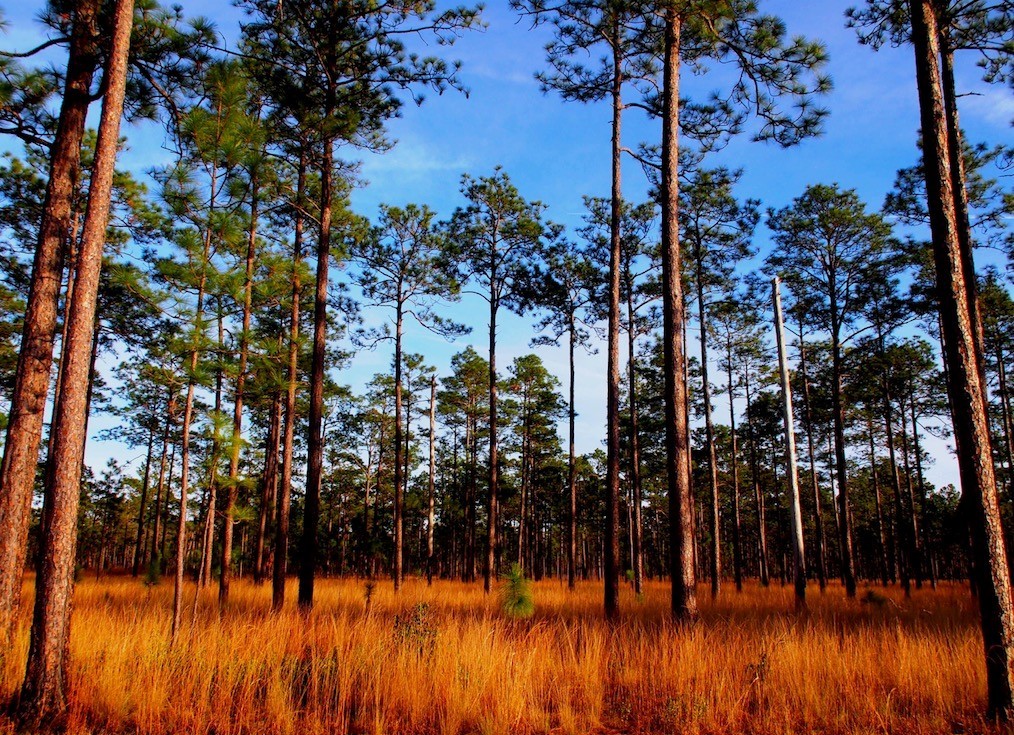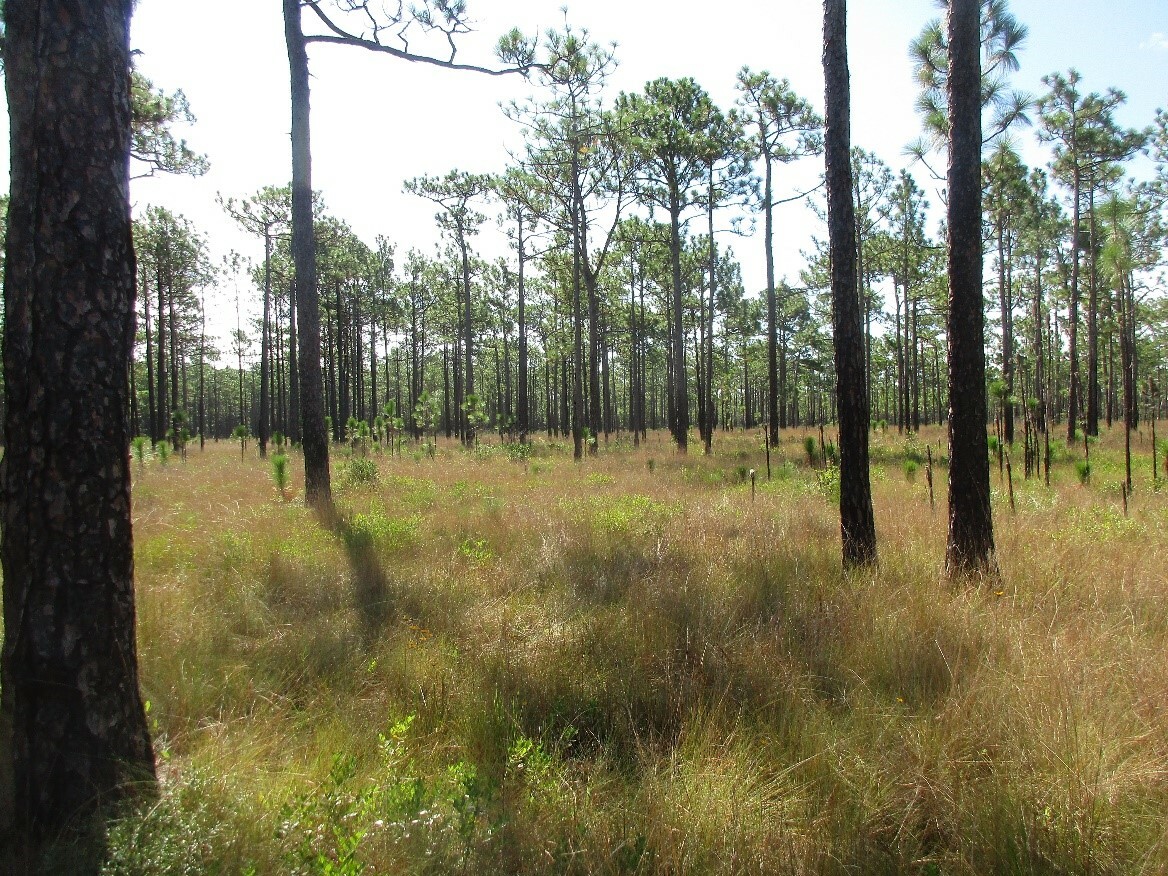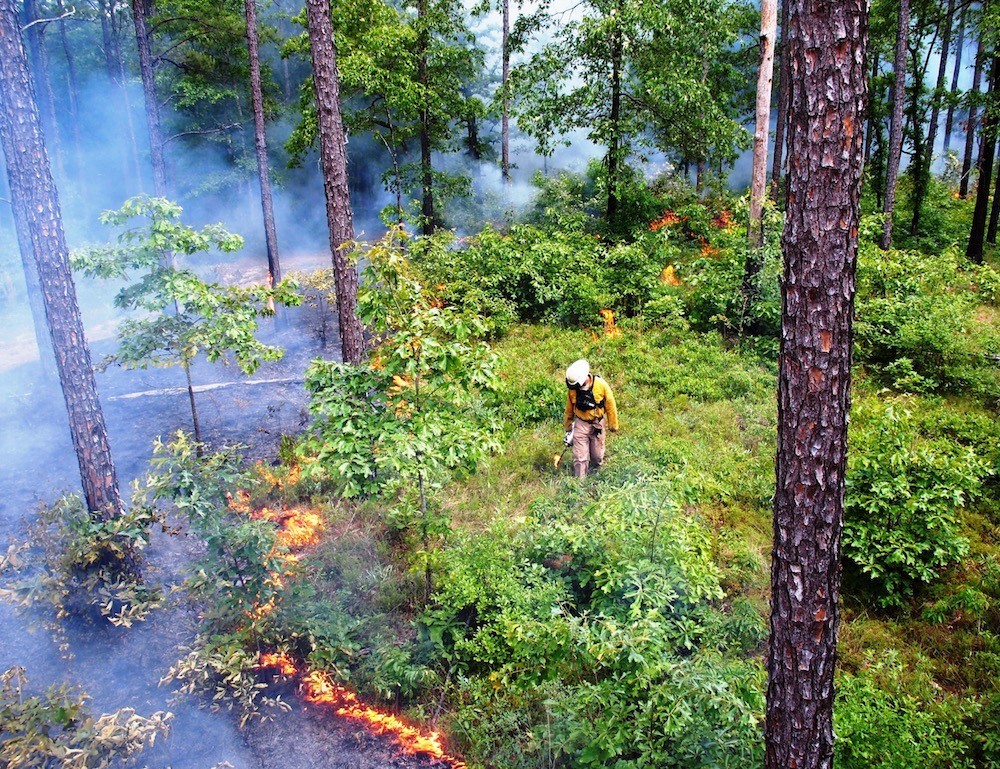A longer version of this article was published in the Fall 2018 Issue of The Longleaf Leader.
The Great Disappearing Forest
In the early 1800s, North America’s longleaf pine forest was like the American bison’s historical range: It covered such a huge area that its full extent is difficult to comprehend today. Back then, longleaf pine-dominated forests stretched from eastern Texas to southern Virginia and south into central Florida. Overall, these forests covered about 90 million acres — nearly the size of the state of Montana.
Today, longleaf pine-dominated forests cover less than 5 million acres, which would easily fit into New Jersey. Of these remaining acres of this former signature tree of the American South, only about 12,000 highly fragmented acres are mature, “old growth” forests. That’s less than half the size of Florida’s Disney World Resort property.

Randy Tate, The Longleaf Alliance
Across nine states from Virginia to Texas, longleaf was once the dominant forest of the southeastern plain.
Where it All Went
The dense, tightly grained wood from these forests was used to build some of America’s great cities and railroads, as well as cottages, castles and mines in the British Isles. In addition, vast sections of the forest were cleared for crops, grazing and human development, while fire suppression and feral hogs degraded other longleaf areas.
The noted American botanist and ecologist Bertram Whittier Wells was not impressed by what had happened to the biologically richest region of North America. Back in 1932, Wells was quoted as saying, “The complete destruction of this forest constitutes one of the major social crimes of American history.”
A Couple of Johnny Appleseeds
By the 1990s, so few people remembered these immense forested areas that their loss was hardly felt. Many of the scientists who had dedicated their careers to studying longleaf were near the end of their lives. Fewer people than ever appreciated the “whispering pines” with forest floors that were bathed in sunlight that filtered through high, open tree canopies.
Two professors at Auburn University — Rhett Johnson and Dean Gjerstad — were among the few longleaf boosters remaining at that time. Johnson recalls, “We first looked at longleaf just as a tree, but then we realized what a unique and valuable ecosystem it was. Healthy longleaf forests have incredible biodiversity. They’re like living museums when you consider how little is left. After a few years of lonely longleaf research, we looked around and found that longleaf was still disappearing at a pretty rapid rate. But the people who were really knowledgeable about it were disappearing even faster.”
Johnson and Gjerstad decided to take action. Johnson says, “We had a couple of meetings in 1994 and we found more interest in longleaf restoration than we’d expected. But no one wanted to take the lead. We had to do it ourselves and on our own time. We both had day jobs but it was very rewarding, especially in working with private landowners. It was like we were Johnny Appleseeds: We’d scatter like a covey of quail and go to four different states. And it wasn’t just about hunting or timber: Some landowners were just excited about restoring this historic, iconic landscape.” As time went on, Johnson says, “Darned if it didn’t take off. We realized that we weren’t capable of managing growth and interest, and that we needed partners.”

Healthy longleaf pine ecosystems are home to an incredibly diverse range of plants and animals, including many that have become difficult to find across the South.
The Goal: Eight Million Acres in 15 Years
In 2007, The Longleaf Alliance joined forces with more than 20 other organizations from federal and state agencies and the private sector to ensure a sustainable future for longleaf pine ecosystems. That partnership became ALRI — America's Longleaf Restoration Initiative. ALRI’s conservation plan, drafted in 2009, calls for an increase in longleaf-dominant forests to 8 million acres by 2025.
ALRI partners provide a wide range of services and perspectives related to the restoration effort. Here are a few examples:
- The USDA Natural Resources Conservation Service and the USDA Forest Service’s Cooperative Forestry staff work with state governments, private landowners, and other partners to raise awareness about longleaf habitat and relevant assistance programs such as the Cooperative Forestry Assistance Act.
- The U.S. Fish and Wildlife Service works with landowners to establish safe harbor agreements, which can eliminate liability under the Endangered Species Act if the landowner manages land in a predetermined way.
- The Department of Defense works with the Fish and Wildlife Service on land use activities that might affect listed species such as the red-cockaded woodpecker or threatened species such as the gopher tortoise.
- The National Fish and Wildlife Foundation manages the Longleaf Stewardship Fund, which has helped restore and enhance more than 1.5 million longleaf acres.
- The Conservation Fund is working with private landowners to establish and maintain the Coastal Headwaters Forest, a functional longleaf ecosystem in the Florida Panhandle and southern Alabama.

Randy Tate, Longleaf Alliance
The Longleaf Stewardship Fund helps fund burn crews so longleaf landowners have access to trained and qualified experts.
Implications for the Rest of the Country
While this initiative will transform parts of the South, it also has implications for landscape-wide ecosystem restoration efforts elsewhere.
“I think we’ve made a lot of progress, even though we have a long way to go,” says Ken Arney, acting regional forester of the Forest Service Southern Region. “Our hope is that we can reach our goal of 8 million acres by 2025 while also demonstrating that this kind of effort can be replicated in other landscapes around the country.”
Brian Cooke is a science and environmental writer based out of Fort Collins, Colorado. He received a degree in journalism-science writing from Lehigh University and refined his storytelling skills by leading night tours on Alcatraz and educating visitors at a National Forest fire lookout tower in Colorado. Brian’s writing and editing work has included assignments for several federal agencies and environmental services companies. Additional information on Brian can be found at www.linkedin.com/in/bcooke1.
NFF Note: The NFF has planted hundreds of thousands of longleaf pine seedlings on National Forests across the Southeast. In addition to partnering with the U.S. Forest Service on longleaf pine recovery, the NFF is partnering with The Longleaf Alliance on Mississippi National Forests and Coca-Cola North America on Florida National Forests in 2019.

